
We were due for a broad core update, and a broad core update we received. The June 2025 Google core update was a red-hot update that rolled out on June 30th right before the July 4th holiday weekend. The update took 16 days to fully roll out, which was shorter than Google said it could take when the update was initially released. As I covered via my “Core Update Notes” on social media each morning, it was a huge update with many sites surging and dropping. And that included HCU(X) sites surging back, which was awesome to see. I’ll cover more about that soon.
Note, if you are new to core updates, you should read my core update primer containing FAQs and key points for site owners. That’s always a great place to start.
Regarding volatility, I have many websites documented across verticals and countries that surged or dropped heavily based on the June 2025 core update. To give you a quick view of some of the largest drops and surges based on the update, here are some screenshots of search visibility trending:
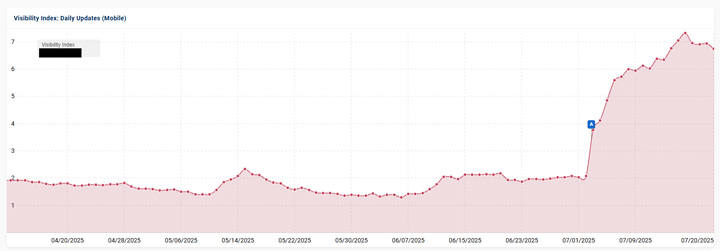
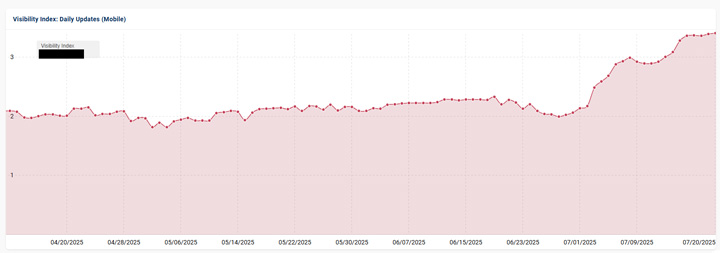
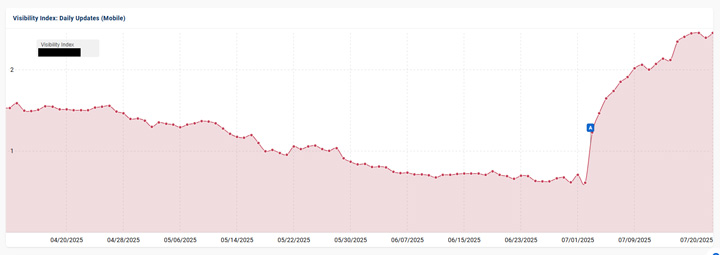
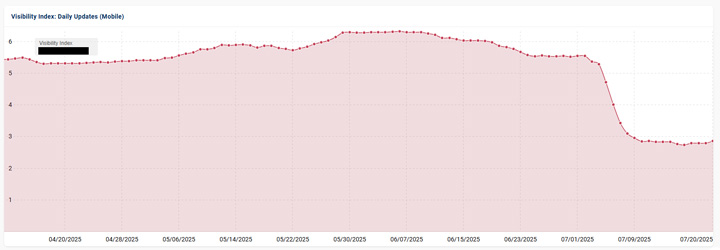
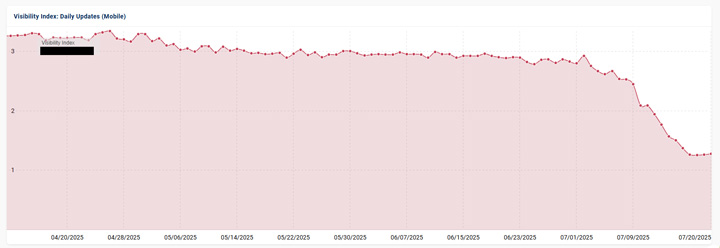
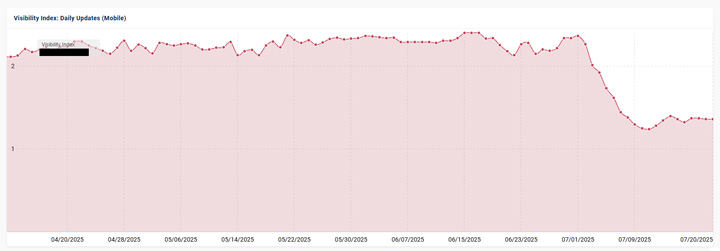
As I explained in my recent post about AI Search accounting for less than 1% of traffic to most sites, DO NOT ignore Google Search and let quality drop. If you do, then you leave your site susceptible to impact from a broad core update. It was only five days after that post that the June core update rolled out. And again, some sites plummeted in search visibility.
Pre-core update volatility – A reviews system update?
As Barry covered heavily on Search Engine Roundtable, there was a ton of volatility leading up to the June 2025 core update. Volatility was heavy in early June and then more in mid-to-late June.
One thing I noticed with that volatility is that many sites impacted by previous reviews updates (including older Product Reviews Updates) were seeing a lot of movement. I covered that in my “Core Update Notes” tweet on 7/1.
Based on my analysis, I believe Google could have pushed a big reviews system update behind the scenes. Note, following the April 2023 reviews update, and then the November 2023 reviews update, Google explained the reviews system would be updated on a “regular and ongoing basis” behind the scenes. They also explained that they would not be announcing additional reviews updates. In addition, Google’s Danny Sullivan later explained the system is still being updated, and frequently.
For example, here are some of the screenshots of volatility in early-to-mid June before the June core update rolled out (on sites that were previously impacted by reviews updates). Note, Google could have updated more than just the reviews system with the early June volatility, but I do believe the reviews system was part of it.


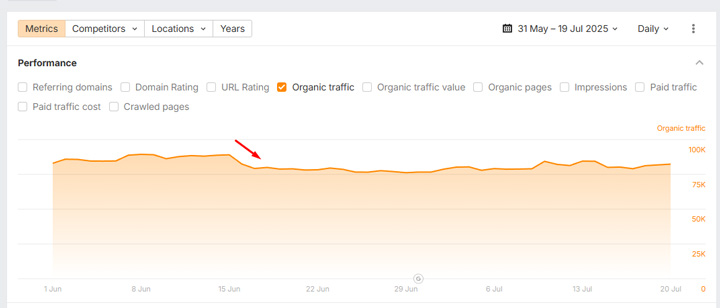
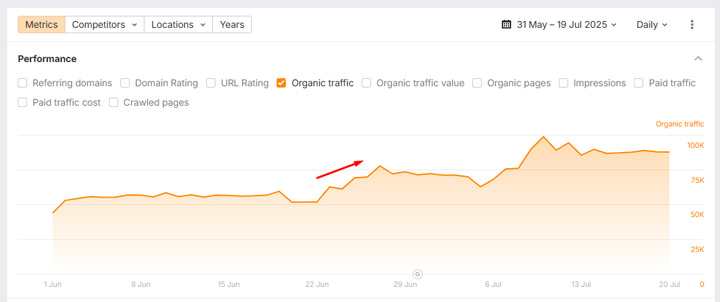
If you quickly look at the screenshot below, you might think this site surged with the June core update starting on 6/30. Nope, it was over a week before the update rolled out (on 6/21):
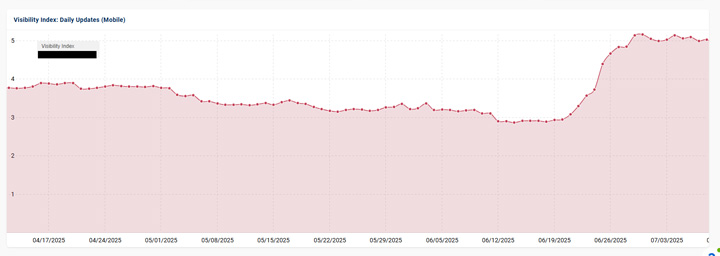
Reminder: Core updates begin when they are announced, not before.
Also, just a reminder that Google has emphasized several times that core updates begin when core updates are announced. Therefore, the pre-core update movement starting in early June was not the broad core update (which began rolling out on June 30th). Google pushes updates all the time including smaller core updates (specific core systems getting updated outside of broad core updates). When that happens, those smaller core updates can have a big impact on some sites.
Here is a tweet of mine from the March 2025 core update where I explain this (after reaching out to Google and hearing back from them about the pre-March core update volatility). They explained that volatility was NOT the March core update…
And here is a closer view of Google’s documentation explaining they can push smaller core updates:

HCU(X) Sites Surge… Finally
This was probably the biggest surprise based on the June core update. Sites that were obliterated by the September 2023 Helpful Content Update (HCUX) finally started surging back. And some were surging back from the dead (literally back from no visibility at all). I documented this heavily on social media based on tracking a list of 400 sites hit hard by the HCU(X) over time. It’s basically a barometer for sites impacted by the September 2023 HCU(X).
Google clearly adjusted something with their systems that evaluate the helpfulness of content. It’s important to remember that Google baked the HCU into its core ranking system with the March 2024 core update and the HCU classifier was removed. But those sites impacted by the September 2023 HCU(X) were hit even harder with the March 2024 core update. So it was awesome to see a number of sites surge back with the June 2025 core update. Many aren’t back to where they were before September 2023, but there are some full (or near-full) recoveries in the mix.
Here are some examples of sites heavily impacted by the September 2023 HCU(X) surging back with the June core update:

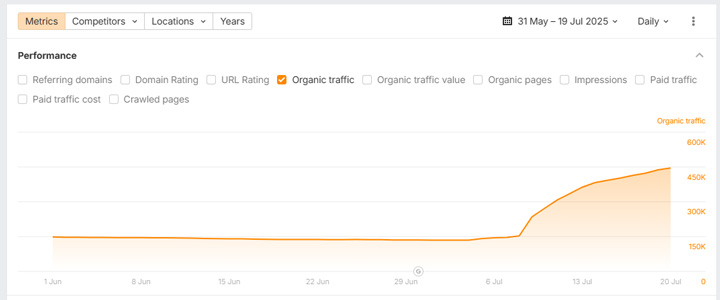
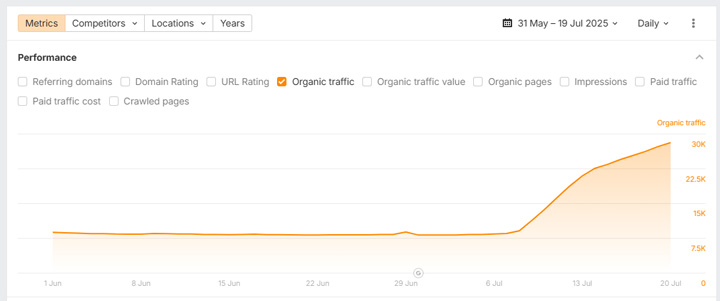

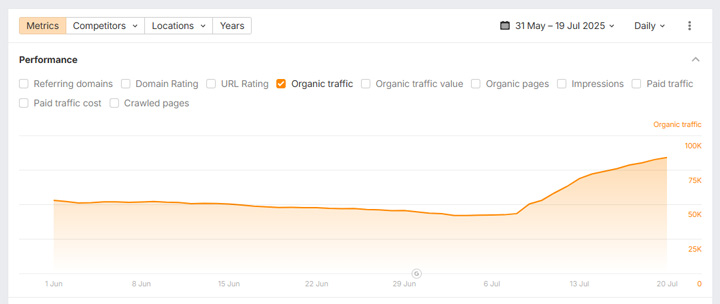
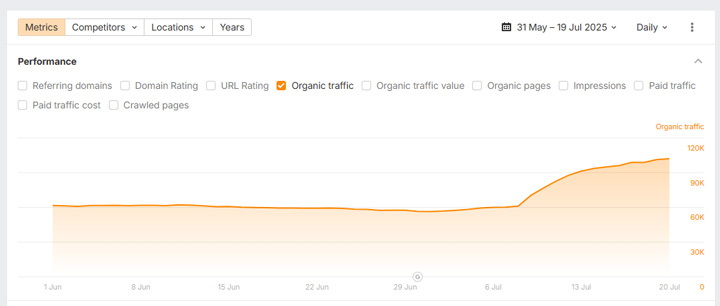

Also, it’s interesting to note that the surges started on July 8th and July 9th AFTER the initial movement we saw from the June core update. It’s a great example of Google updating a specific system, or several, during the core update. The sites didn’t move until July 8th. Here is my tweet about that:
And as I shared on social media, not all HCU(X) sites surged back. Some dropped even more… Unfortunately, there are some site owners that gave up and abandoned their efforts. I totally understand that based on what was happening over time (with no recovery as update after update rolled out). You can see examples of the recent drops in my tweet below.
AI Overview Impact – I warned site owners this could happen.
In my post about AI Search driving less than 1% of traffic to most sites (with many receiving less than .5% from AI Search tools like ChatGPT, Perplexity, etc.), I explained that site owners should NOT ignore Google Search to completely focus on AI Search. As of June 2025, organic search (and mostly Google) drives a majority of the traffic for most sites. And if site owners switch their entire focus to implementing tactics for AI Search, then quality could drop across their sites. And if that happens, then they leave their sites susceptible to getting hit by a broad core update.
Well, it was only five days later that Google rolled out the June broad core update, and like I explained earlier, many sites saw a ton of volatility (surging or dropping). Also as part of my post, I explained that broad core updates can impact all Google surfaces, including web search, image search, video search, Google News, top stories, the News tab in Search, and Google Discover. But it doesn’t stop there, AI Overviews and AI Mode are both within the “Web Search” bucket and both are “rooted in Google’s core quality and ranking systems.” In other words, they can also be impacted by broad core updates.
Here is Google explaining that:
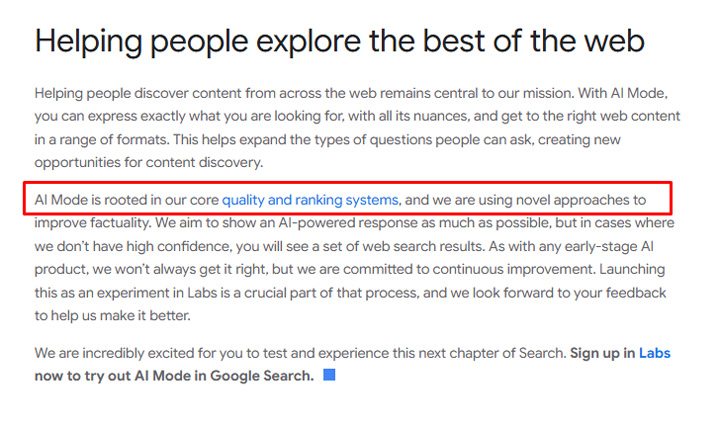
Well, like I knew would happen, sites negatively impacted by the June core update saw visibility in AI Overviews drop as well. I shared several examples of that across social media. You can see some examples below.
Here is AI Overview visibility for two different sites impacted by the June core update:

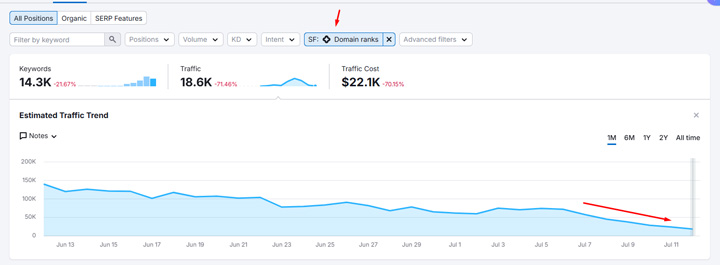
And like I explained above, all Google surfaces can be impacted by broad core updates. Here are some sites seeing movement outside of web search based on the broad core update. For example, image search surging and then the News tab surging for another site.
E.g. the News tab in Search impacted:
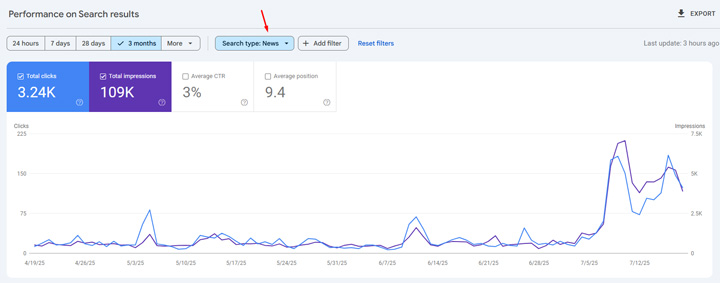
And image search impacted:
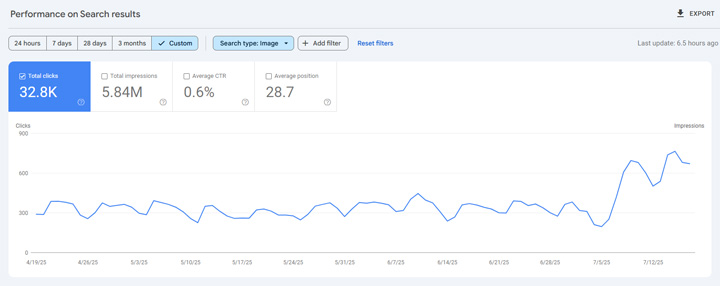
In addition, I’ve had a number of publishers reaching out about Discover impact. For example, clicks and impressions in Discover dropping heavily as the update rolled out. That’s based on Google’s reevaluation of quality for the sites in question. I have covered the Discover impact many times before.
So please, don’t ignore Google Search. You could pay a heavy price if you let quality drop over time.
YMYL Movement – A lot of it.
When core updates roll out, I’m often asked which specific verticals I’m seeing movement in. It’s important to understand that broad core updates are global updates that impact all verticals. I’ve also explained many times that you will never reverse engineer a broad core update since Google’s core ranking system is extremely sophisticated and contains many different subsystems working together to output a score.
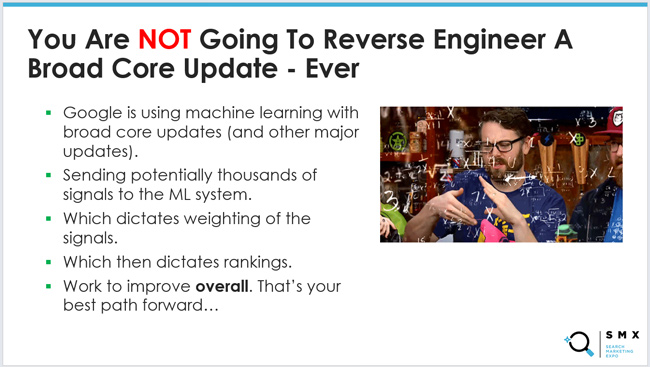
Sites containing YMYL content (Your Money or Your Life) can always see a lot of volatility during broad core updates, but I saw a ton of volatility with the June core update. For example, health and medical, finance, legal, etc. I just wanted to mention that in case you focus on YMYL topics.
Sites focused on YMYL topics are held to a higher standard algorithmically by Google. That’s important to understand if you run a site in a YMYL category. It’s another reason to ensure “quality” is as high as possible across your site. And remember, “quality” is more than just content. Google has explained it’s about content, the user experience, how things are presented, and more. Don’t forget about Navboost, which tracks 13 months of user interaction signals. It’s an important system to Google and it’s how Google can determine happy versus unhappy users.
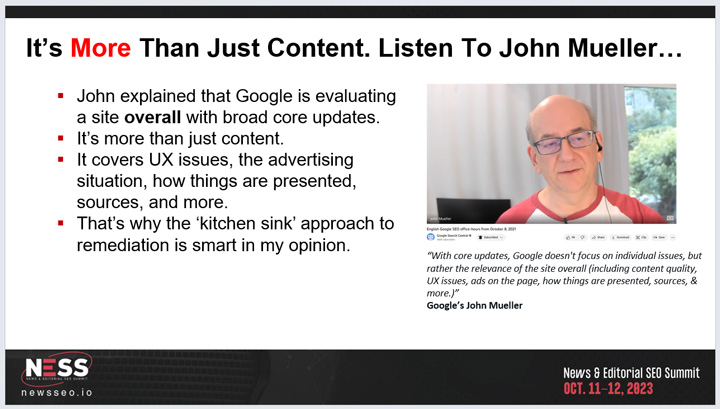
Here are some examples of sites focused on YMYL topics seeing a lot of volatility. Again, this is across health and medical, finance, legal, etc.
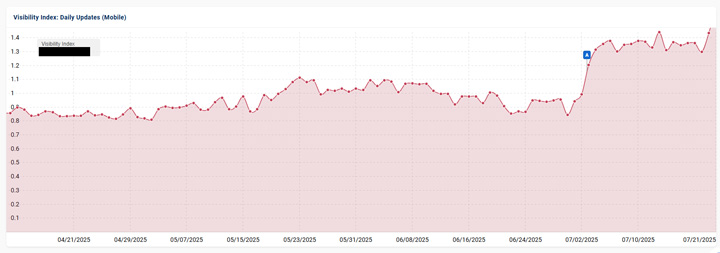
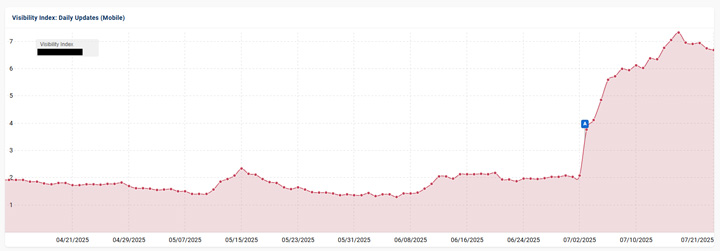
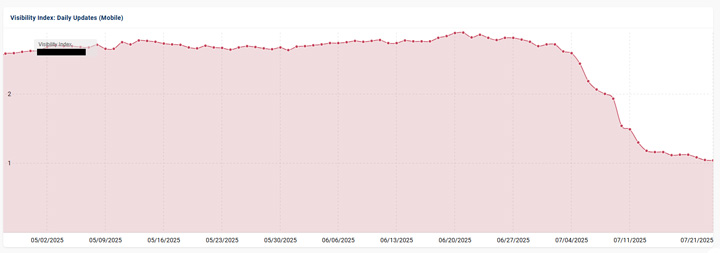

Decoupling versus Coupling: Not all sites are seeing a decoupling of clicks and impressions.
I also wanted to quickly mention that not all sites are seeing a decoupling of impressions and clicks. I have some clients where AI Overviews do not trigger often and clicks and impressions are coupled (like most sites used to see before AI Overviews entered the scene).
For example, below you can see clicks and impressions remain coupled over time for a client of mine. Also, the site surged with the June core update and both clicks and impressions increased at about the same level. Again, just a reminder that not all sites are seeing “The Great Decoupling”.
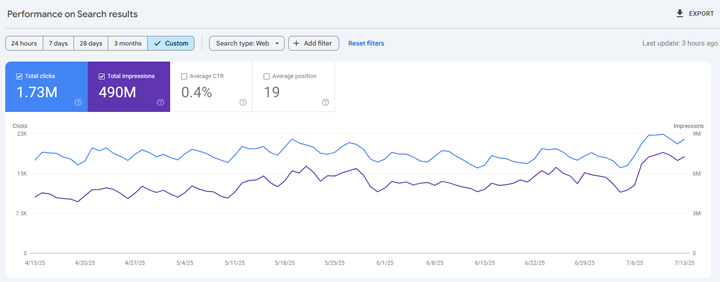
And here’s another client of mine that’s not affected by AIOs (they just don’t trigger often based on their niche):
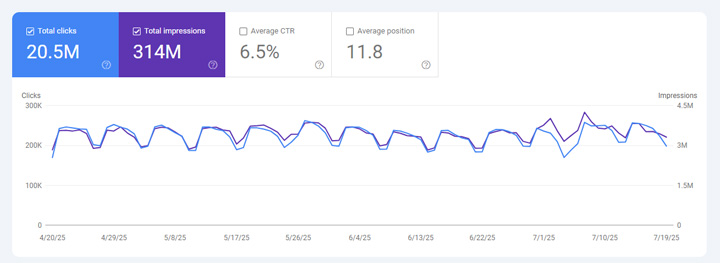
Recovery from the March 2025 core update and the importance of clearly escaping the gray area of Google’s algorithms.
The last topic I wanted to cover is recovery from the March 2025 core update. You can always see recoveries from previous core updates during subsequent core updates, but it was interesting to see some dramatic surges back only a few months after the March 2025 core update rolled out.
I’ve always explained that you want to get clearly out of the gray area from a quality perspective. If not, then you can see surges and drops with every core update. If Google turns a dial up or down algorithmically with a core system, or several, then sites can move from the gray area and surge or drop. For the site below, it was a positive move… at least for this core update.
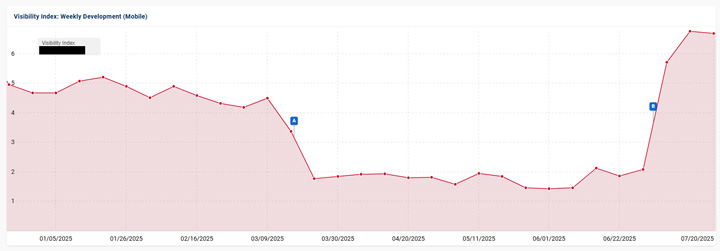
Summary: The June Core Update was big. Really big.
Again, the June core update was a red-hot broad core algorithm update causing a lot of volatility across verticals and countries. And that’s fitting since it rolled out right before the July 4th holiday when we already see fireworks. From HCU(X) surges to heavy YMYL impact to AIOs and AI Mode impact, the June core update was an interesting broad core update to analyze.
Moving forward, I do believe we’ll see another core update, or two, in the fall. So if your site has been negatively impacted by the March or June core updates, I recommend first running a delta report to identify the reason for the drop. And if “quality” is the issue (which is more than just content), use the “kitchen sink” approach to remediation, work hard to surface as many quality issues as possible that can be impacting the site, and then address as many of those problems as you can. For example, work on improving “quality indexing” levels, improve the user experience, the advertising and affiliate situation, fix technical SEO problems causing quality problems, and more. You will typically need another broad core update to see recovery so focus on long-term improvements. That’s what Google wants to see. Good luck.
GG
